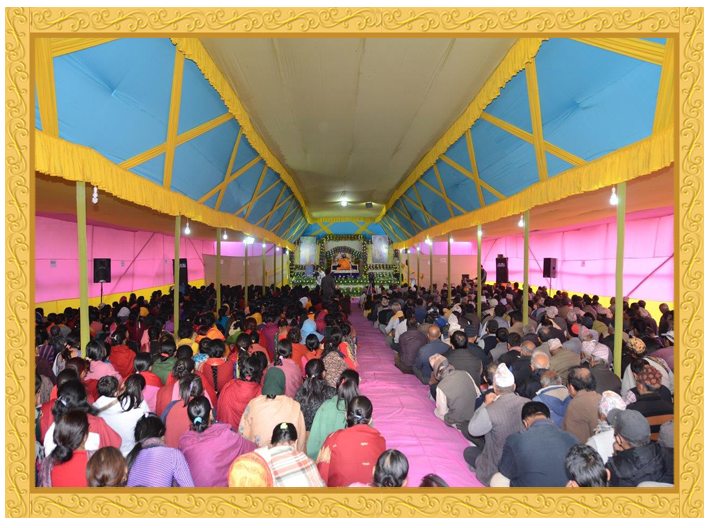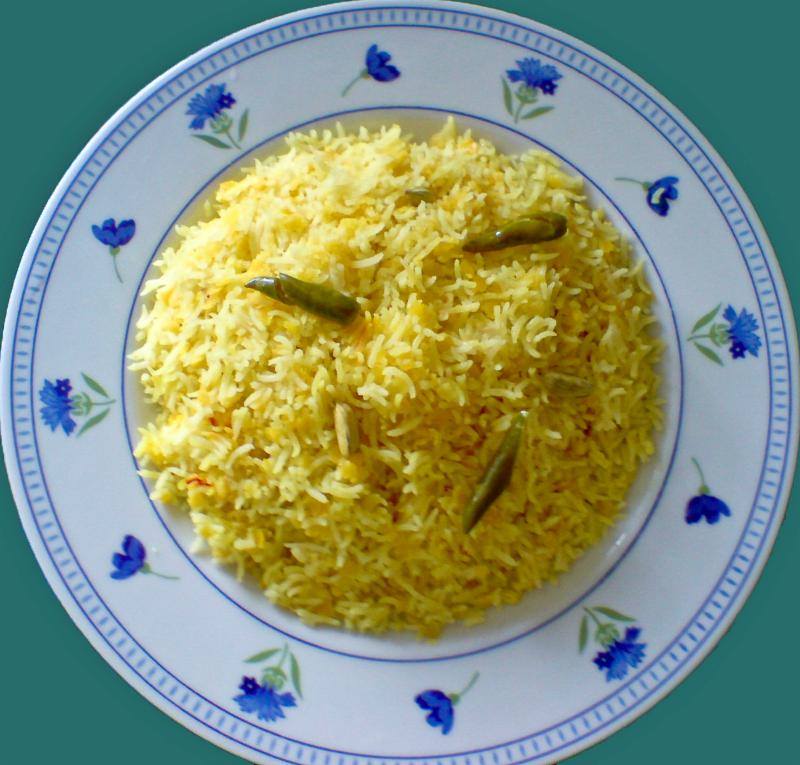|
|
JKYog e-Magazine, Issue No. 67
March, 2015
|
|
|
 |
 |
The constant play of fluctuating gunas
Do you commonly experience that your mood fluctuates
throughout the day? You feel that at one point you were sincerely
working hard to complete an office project and sometime later you
wanted to do it faster and better than your colleague at any cost.
But at the end of the day, you felt awfully upset and envious because
in stead of you, your colleague received all the appreciation for his project.  Such is the nature of the world; it is constantly fluctuating.
This fluctuation can be explained in a simple and logical manner. The
human mind is governed by the predominance of the three gunas. These gunas are inherent to material energy and anyone under the influence of material energy is bound to be dominated by either of the gunas. The three gunas are sattvic guna, rajasic guna and tamasic guna. At any given point in time, our mind is dominated by any one of the gunas. It is interesting to observe how our temperament changes as the guna that governs our mind also changes. When the sattvic mode governs the mind, we feel calm, serene, friendly, and peaceful. When the rajasic mode prevails, we become passionate, ambitious and desirous of pleasure of the senses. When the tamasic mode predominates, we become lazy, resentful, and violent. Since these gunas fluctuate constantly, every individual has varying temperaments throughout the day. Such is the nature of the world; it is constantly fluctuating.
This fluctuation can be explained in a simple and logical manner. The
human mind is governed by the predominance of the three gunas. These gunas are inherent to material energy and anyone under the influence of material energy is bound to be dominated by either of the gunas. The three gunas are sattvic guna, rajasic guna and tamasic guna. At any given point in time, our mind is dominated by any one of the gunas. It is interesting to observe how our temperament changes as the guna that governs our mind also changes. When the sattvic mode governs the mind, we feel calm, serene, friendly, and peaceful. When the rajasic mode prevails, we become passionate, ambitious and desirous of pleasure of the senses. When the tamasic mode predominates, we become lazy, resentful, and violent. Since these gunas fluctuate constantly, every individual has varying temperaments throughout the day.
Another fact about the gunas is that there is no guarantee about which guna
will predominate at any given time of the day. Normally, the
atmosphere or environment that we stay in most of the time, determines
which guna will predominate and which two will become
subordinate. There is one more important point to reflect
upon. Due to lack of sattvic qualities and thoughts, it is only when we are exposed to a sattvic
environment in abundance that we are occasionally dominated by this
mode. On the other hand, because there is abundance of rajasic environment around us, we are easily overpowered by this guna even with the slightest association. The tamasic guna is the most powerful guna
of all. When somebody condemns us, our spontaneous reaction is to
lash back at that person. It shows how easily we are overpowered
by tamasic guna. In this manner, all of us experience a constant play of the fluctuating gunas.
These constantly changing gunas
are so overpowering that it is not even possible to have steady
feelings and faith in God and Guru. Although Saints and God are
beyond these three gunas, they appear to us to be endowed with these temperaments because our own perception is colored by these gunas. It is only when the spiritual aspirants persistently practice to take their mind toward God, who is beyond the three gunas of material nature, that their mind becomes purified. The material mind of sadhaks also oscillates amidst the three gunas,
however, they practice to push the mind and intellect to harbour
feelings of love and service to God and Guru at all times. This
way, they gradually overcome the fluctuating play of the gunas and gain control of their mind.
|
 |
|
|
|
It is interesting to observe how our temperament changes as the guna that governs our mind also changes. When the sattvic mode governs the mind, we feel calm, serene, friendly, and peaceful. When the rajasic mode prevails, we become passionate, ambitious and desirous of pleasure of the senses. When the tamasic mode predominates, we become lazy, resentful, and violent. Since these gunas fluctuate constantly, every individual has varying temperaments throughout the day.
|
|
|
 |
 |
The simple formula to deal with people
The entire material world and all the people under the influence of material energy are naturally endowed with the three gunas- sattvic, rajas and tamas. The difference of the gunas
and their constant fluctuation accounts for people's divergent ideas,
interests, desires and tastes. And in simple words, strife happens
when thoughts and opinions diverge. This strife exists
everywhere - between husband & wife, father & son, brother &
sister, friend & companion, boss & subordinate, etc.
Congruence can happen between two people only when they have the same gunas. However, since everyone's gunas are fluctuating, it is unreasonable to expect that the gunas of different people will match.
 Even when the gunas match, the intensity of the gunas
may differ in each person, hence harmony still may not exist.
Most arguments between people are a result of difference of the degree
of the intensity of gunas in each individual. Jagadguru
Shree Kripaluji Maharaj says, "The reason for our anxiety is that we
have unreasonable expectations. We want others to always think in
the same manner as we do. And when this does not happen, we get
disturbed. Instead, if you could realize the
fluctuating situation of gunas all the time, you would be
surprised if even one person remained favourable to you for even a
day. However, our understanding is the reverse. When a
person is less favourable towards us we are surprised. The fact is
that no one in the world is favourable or unfavourable to anyone". Even when the gunas match, the intensity of the gunas
may differ in each person, hence harmony still may not exist.
Most arguments between people are a result of difference of the degree
of the intensity of gunas in each individual. Jagadguru
Shree Kripaluji Maharaj says, "The reason for our anxiety is that we
have unreasonable expectations. We want others to always think in
the same manner as we do. And when this does not happen, we get
disturbed. Instead, if you could realize the
fluctuating situation of gunas all the time, you would be
surprised if even one person remained favourable to you for even a
day. However, our understanding is the reverse. When a
person is less favourable towards us we are surprised. The fact is
that no one in the world is favourable or unfavourable to anyone".
We must remember and implement this simple philosophy in our
lives if we wish to live peacefully and unperturbed by other people's
behaviour. Friendship between people exists as long as their gunas are in harmony. The moment the gunas
are opposed to each other, there is a strife between people. We
are always struggling in the world to make people favourable towards
us. We make futile efforts in the office, at home, and in social
gatherings to turn people's behaviour positively towards us. If we
can remember that each and every person is compulsively dominated by
the constantly fluctuating gunas, we will stop being hurt by another person's behaviour.
The
world will continue its work under the influence of Maya, as is its
nature. We should not bother about it. Instead, we should increase
our understanding of the world and learn to insulate ourselves from the
fluctuating moods of others. This way we will find it much easier to
deal with people and at the same time focus on our spiritual
advancement.
|
 |
|
|
Bhakti Yog Sadhana Shibir in Birgunj, Nepal
A three-day
Bhakti Yog Sadhana Shibir was conducted under
Swamiji's guidance at Radha Kunj Dham in the
commercial capital of Nepal, Birgunj. On the last day
(10th March) of 3-day Bhakti Yoga Sadhana Shibir in
Birgunj, Swamiji led a Nagar Sankirtan
program.
7-Day Lecture program in Kathmandu, Nepal
Swamiji's
7-day lecture on Shreemad Bhagavat Mahapuran was held
in Banakali - Shree Pashupatinath Temple in
Kathmandu, Nepal. Ms. Radha Gyawali- Minister
of Energy welcomed Swamiji to Nepal on behalf of the
Government of Nepal. The program was a grand
success with over 2000 people attending the
lecture everyday.
|  |
|
|
|
Holi Celebration at Radha Krishna Temple Site
| |
|
 |
 |
|

|
|
Mar 29th to Apr 3rd
|
|
Apr 12th to 17th
|
Jacksonville, FL
| |
Apr 4th to Apr 10th
|
Maryland, MD
|
Apr 18th to 24th
|
Tampa, FL
|
Up-coming Retreats 2015
|
May 23rd to 25th
|
Fresno, CA
|
Sept 5th to 7th
|
Dallas, TX
| |
July 10th to 12th
|
Mount Laurel, NJ
| |
For details, click here
|
 |
 |
|
|
The Goal of Human Life
by Jagadguru Shree Kripaluji Maharaj
Every
individual performs various actions every moment with a single
purpose. It may appear strange but it is true. Some do good deeds and
some perform bad ones. In reality, everyone performs actions that give
them happiness.
|
|
Like
an evil person finds happiness in harming others, a Saint performs
actions for the welfare of others which give him happiness. The motive
behind achieving wealth, health, wife, son, fame, beauty is one -
HAPPINESS. This proves that without any teaching or training every
individual wants happiness and nobody wants sorrow, grief or pain
because:
ānando brahmeti vyajānāt
(ved)
Happiness, bliss, peace are other names
or synonyms for God. Now arises a question. What is the relationship
between our desire for happiness and God being bliss personified? Yes,
there is a relation.
īśhvar ańśh jīv avināśhī
(rāmāyaṇ)
The
relation is that every individual soul is an eternal part of God, and
God is bliss personified. Therefore being an eternal part of him, every
individual soul naturally seeks happiness. No soul can ever wish
for sorrow.
Since
infinite lifetimes, all of us are searching happiness in this material
world, but according to our scriptures (Vedas) and our
personal experiences, there is no doubt that worldly happiness is short
lived. It is finite and illusive. When we eat a rasgulla (an
Indian sweet) for the first time, we experience great pleasure. But if
someone asks us to keep eating the same sweet, we feel like vomiting. So
if there is pleasure in rasgulla or any such object, then we
should experience this pleasure for ever. But this is not the case. Why
don't we derive constant happiness from that object? In the same manner,
the pleasure from wealth, spouse, children, food, etc., keeps on
fluctuating and finally comes to an end.
So
why haven't we attained true happiness till now? Because we have not
understood, realized and decided the true nature of happiness. Where is
that kind of happiness? How can we attain it? Surprisingly, despite our
continuous efforts to achieve happiness, we have not understood what and
where we will get this happiness. Happiness is that which is unlimited,
ever increasing and ever lasting. Sorrow cannot overcome it, like
darkness cannot overcome light. So where is this kind of
happiness? The answer to this question can be categorized into two areas
(which are intensely debated) - materialism and spirituality. According
to materialism, there is no entity or authority called God and one will
get happiness through material objects. Whereas, according to
spirituality, only God is bliss and by attaining God we can be happy for
eternity. There is no other way to the attainment of happiness and
removal of pain and
suffering.
raso vai saḥ
The
Vedas declares that even the most intellectual cannot comprehend God
because he is beyond our material senses and by the grace of God even a
fool can know God. Thus, every individual seeks happiness and since God
is bliss, everyone is a seeker of God. Every person will work
continuously till he attains true happiness and peace. The materialists
deny the existence of God, but they can only claim that there is no
entity called God if according to the scriptures, we do not attain God
even after surrendering to a Guru and performing devotion.
The
conclusion is that we must believe in the existence of God. But a
question arises: what is our purpose of worshipping him? Yes, there is a
purpose. We are all selfish in nature, and whoever satisfies our
self-interests, we get attached to that person. We all long for
unlimited, everlasting happiness and that happiness is only in God. All
our self-interests will be fulfilled by worshipping God, and without
understanding him we cannot attain true happiness. Therefore, having a
human body, if we do not understand God, that will be our greatest
mistake. We would have to suffer in the cycle of 8.4 million species of
life, because only in the human form, we can attain God and acquire the
knowledge of God, our ultimate goal of divine bliss. |
|
 |
|

|
JKYog Presents
Bal-Mukund
Personality Development Classes for Children
|
|
Highlights:
· Character Building Values
· Yoga & Meditations
· Bhajans, Shlokas & Prayers
· Inspiring Stories
|
Showcase:
Bal-Mukund
welcomes all contributions of creative works from
children in different areas including poetry, moral
stories, art work, etc.
|
|
|
|
|
Holi Celebrations at Bal-Mukund!
|
The joy and enthusiasm
of introducing Bal-Mukunds to the jubilant festival of Holi hasn't
diminished even though a cold wave has been sweeping through the US! If
water couldn't be splashed they made it with dry gulal, but celebrating
it was a must! Children at our International centers of Dubai and
Singapore used beautiful fragrant flower petals as gulal and offered
them to Radha and Krishna! Various centers spent joyous hours explaining
the meaning of Holi and the reasons this festival is celebrated with so
much fervor and enthusiasm. A few centers will celebrate Holi on a
large scale as part of their Parent Information & Celebration
Session! Warmer temperatures and sun kissed skies will allow Bal-Mukunds
to experience the exuberance of Holi and revel in its
unparalleled colors of entertainment! Bal-Mukund Makes Learning Fun! It Engages the Heart and the Mind! For all related queries email info@bal-mukund.org
|
| |
|
|
|
|
 |
|
| 
1/2 cup quinoa
1/2 cup rice
1 cup split Mung Beans (preferably soaked for 2-3 hrs)
1 tsp EV Olive Oil or Coconut Oil
Vegetables - grated carrots, peas and beans
1 tsp Cumin and Mustard Seeds
1 tsp Fennel powder
1 ˝ tsp Coriander powder
˝ tsp Turmeric powder
˝ tsp Asafoetida powder
1-2 tsp Red Chilli powder (optional)
2-3 tbsp chopped Cilantro
1 tsp freshly squeezed Lime/Lemon Juice
Salt to taste
approx. 2-4 cups of Water
| |
Method
Pressure cook the
rice, quinoa and mung beans together. In a small pan, heat the oil
add the cumin mustard seeds until they sputter. Add the
vegetables and sautee. Add the rest of the spices and combine with
the grains. Enjoy warm with pickle!
|
|
Contact us
|
The Editor JKYog: XVII/3305, 1st Floor, Ranjit Nagar
(Near PUSA), New Delhi - 110008, India
|
7405 Stoney Point Dr, Plano
TX 75025, USA
|
|
|
|
|
|